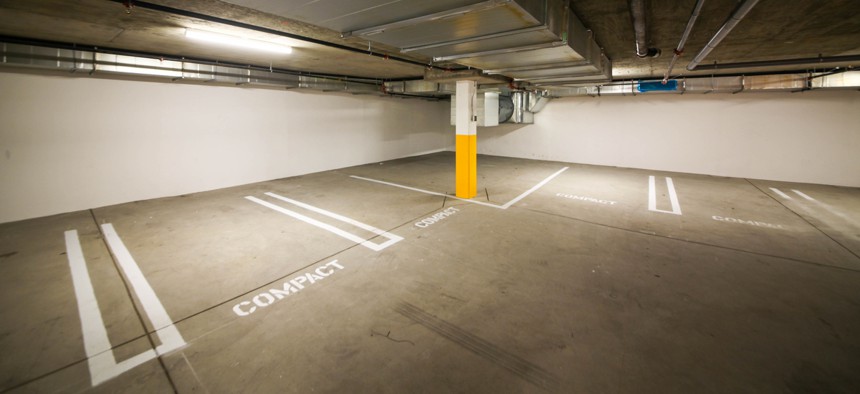The Fiscal Need to Find a ‘Second Life’ for Underutilized Parking Lots

An empty parking garage in Los Angeles. Shutterstock
Revenue streams from parking lots and garages are expected to be undermined as autonomous vehicle technology improves and is more widely adopted.
General Motors’ announcement this week to shutter production at a handful of assembly plants and layoff thousands of factory and white-collar jobs as part of a larger North American restructuring is a clear signal of difficult economic waters U.S. automakers are currently navigating.
One of the biggest challenges automakers are facing is both a simple and complex one: There are fewer people buying cars, especially among younger generations who are eschewing personal automobiles for other modes of transportation, including using public transit and ride-booking apps through companies like Uber and Lyft.
“This isn’t just a GM issue. People aren’t buying cars” like they once did, Lordstown, Ohio Mayor Arno Hill, whose village near Youngstown is home to one of the GM assembly plants slated to be “unallocated” in 2019, said during a press conference on Monday.
But as the testing of autonomous vehicles continues and technology improves, driverless cars are slated to be a destabilizing force for any government, agency or organization that generates revenue from their “parking assets,” like surface lots and garages.
That’s according to a report released Monday by Fitch Ratings which discusses how autonomous vehicles could negatively affect parking areas over time.
“Millennials and Generation Z are most likely to embrace autonomous vehicles since they are already frequent users of ride sharing and are far less likely to obtain a driver's license,” Fitch Ratings Senior Director Chad Lewis said in a statement.
According to Fitch’s evaluation, the exact timing of future parking sector disruption is unclear and big shifts are not immediate, so ratings implications for the parking facilities are “highly unlikely” in the next decade:
Standalone urban parking assets stand to be most susceptible to the effects of driverless cars as they become more commonplace. Once the technology is standardized enough for autonomous vehicles to drop off individuals and travel to cheaper parking spaces further away from the urban centers instead of clogging the facility looking for parking, revenues will decline. Likely to stand in the way of more widespread use of driverless cars, however, are several high profile accidents involving these vehicles of late. Additionally, the public will have to endure inevitable teething problems as the technology is perfected.
But some impacts are already being felt. Fitch notes that some airport authorities are already seeing decreases in parking revenue as more travelers arrive and depart using a ride-booking app from a transportation network company.
“For highly leveraged transactions, especially those with bullet debt, structural features such as cash sweep triggers and management strategy to timely deliver and maintain high coverage ratios in outer years will mitigate longer-term risk. Parking facilities under public ownership with amortizing structures should be able to pay down debt with relative ease,” Lewis said.
Long term, “underutilized parking assets” could have a "second life." Newer parking structures, the Fitch report points out, “could be designed so they can be repurposed if there is a steep decline in parking demand.” Some developers are designing new parking garages with the ability for them to be converted to office space and other uses. Those are more expensive to build compared to conventional car-storage facilities but “hedge against potential declines in parking demand.”
Michael Grass is Executive Editor of Route Fifty and is based in Seattle.
NEXT STORY: Making the Case to Curb Outside Pay for Lawmakers in Albany






